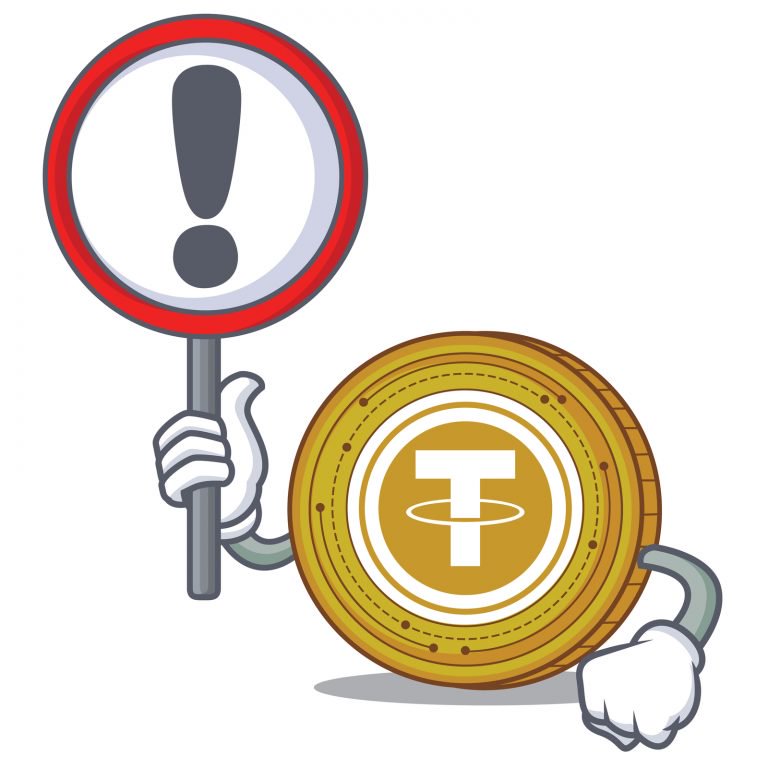The Tether Report, a pseudonymously authored analysis examining the speculative assertion that bitcoin price volatility is highly correlated to the issuance of new USDT, has claimed that approximately 48.8% of bullish price movements have occurred within the two-hours immediately following ninety-one individual Tether grants.

Pseudonymous Author Scrutinizes Tether’s Operations
The Tether Report is authored under a pseudonym comprising a long string of alphanumeric symbols – with the author attributing such to their desire not to be identified out of concerns relating to the possibility of a “backlash” in response to their findings. Tether is described as a “stablecoin” – a cryptocurrency of which the tokens seek “to maintain a stable value of one USD per Tether or ‘USDT’.”
The report states that “Tether in its current incarnation is a 2014 rebranding of Realcoin [that] ostensibly function[s] by taking USD deposits from customers and exchanging them for an equal amount of USDT.” The author describes “the ability to price digital assets in USD without having USD-denominated bank accounts” as a major function enticing exchanges to adopt the cryptocurrency, stating that “the extreme difficulty many exchanges have faced in maintaining banking relationships” makes USDT “quite attractive.”
Tether Subject to Speculation Regarding Suspicious Activities During 2017
The report states that “A number of worrying events […] brought attention to Tether throughout 2017.” During April, Tether and Bitfinex “revealed that their banking relationships in Taiwan had been severed,” – which “led to a general suspension of deposits and withdrawals for retail customers.” Then, in April, the number of Tether issued began to undergo “a massive expansion,” despite the company’s “self-proclaimed inability to accept deposits from non-Taiwanese bank accounts.”
In early September 2017, Tether sought to reject suspicions that the company may be undercapitalized, “promis[ing] a historical audit that is still incomplete” to this day. Instead, the company “produced an internal document” later that month, which “purport[ed] to show USD balances back the then modest amount of [approximately] 440 [million] USDT. The internal memorandum did not divulge the “service agreements and institutional names attached to these funds,” comprising a “reduction of transparency since their April report,” which “establish[ed] the names of their earlier banking partners.
In November, Tether revealed that it had suffered a hack which was quickly “mitigated via an amendment to the Tether network code.” The next month, the company then announced that “the existing platform would be phased out and no further deposits [to] the current wallets should be attempted.”
Despite the many hurdles recently faced by Tether, the number of USDT in issuance has “increased ten-fold in only 5 months” following the release of September’s memo.
Report Finds USDT Issuances and Bitcoin Price Volatility to be Highly Correlated
The dramatic explosion in the number of USDT has led to speculation that Tether has been used as a means by Bitfinex to in order to maintain liquidity on the exchange following the loss of its banking partners – with some analysts going as far as to accuse Tether of mass-producing USDT as a means to manipulate the price of bitcoin.
The report seeks to test this assertion using empirical data, providing analysis of the relative price volatility experienced by bitcoin leading up to and immediately following the issuance of new Tether. The article concludes that “48.7% of bitcoin’s price growth between 3/29/17 and 1/4/18” took place during the “two-hour blocks” immediately following the ninety-one individual grants of new USDT – the collective time of which “total[s] less than 3% of the trading hours during that time period.” Transversely, the report concludes that “the average price behavior on a 2-hour timescale the compounded growth is just 6.5%,” leading the researchers in estimating that “a rough estimate of [approximately] 40% price growth attributed to Tether is defensible.
Hot crypto news today
Why Venezuela’s New National Cryptocurrency El Petro Will Fail
Washington and legacy media are in a tizzy about Venezuela reportedly thwarting international sanctions by way of a dreaded state-backed cryptocurrency...
Japan’s Largest Consumer Electronics Chain Trials Bitcoin Payments
Japan’s largest consumer electronics retailer Yamada Denki has partnered with the country’s largest cryptocurrency exchange Bitflyer to trial bitcoin payments.
Blockchain Will Eliminate Waste and Redundancy in the Logistics Industry
Immutability, transparency and the elimination of intermediaries are some of the most cherished attributes of the blockchain upon which a lot of disruption is happening across various industries.
China’s State Digital Currency Must Have ‘Controllable Anonymity,’ Says Central Bank Official
China’s central bank is moving forward with plans to adopt a state-backed digital currency, but it will likely look very different from bitcoin and other public cryptocurrencies.
Bitcoin Not a ‘Legitimate’ Currency, But a Trusted Digital Currency Could Be: Starbucks Chairman
Bitcoin is not a “legitimate” currency, but a digital currency could one day form the linchpin of a cashless future, at least according to Starbucks Executive Chairman Howard Schultz.
hey so nice I really like your post! Thanks for it! I actually wrote my 2nd part of my introduceyouself and I write about that I went to jail because of cryptos... lets make steemit together to a better place with our content! I would like to read a bit more about you and maybe do you have some more pictures? Maybe you upvote me and follow me swell as I do? https://steemit.com/counterfeit/@mykarma/2-jail-review-counterfeit-euro-speeeeending-time
Downvoting a post can decrease pending rewards and make it less visible. Common reasons:
Submit